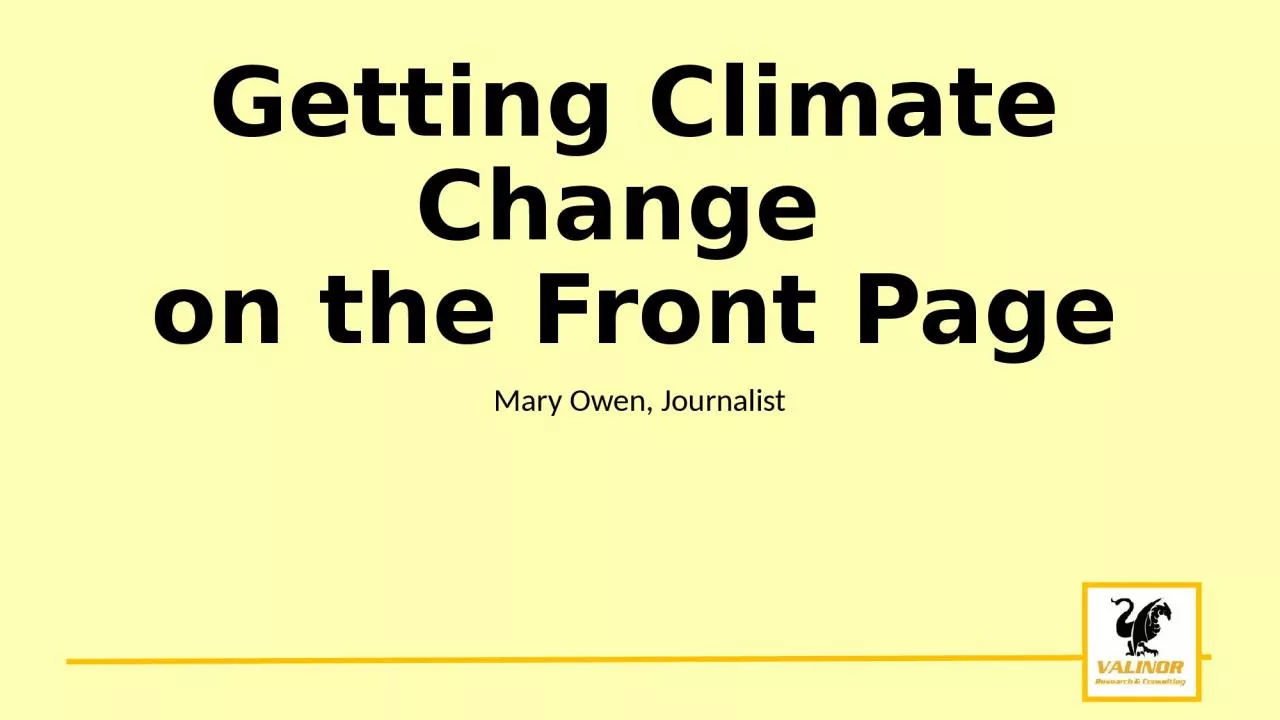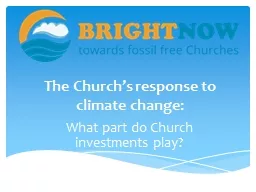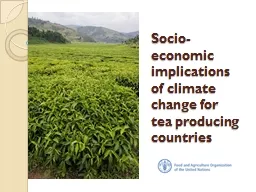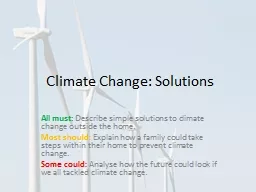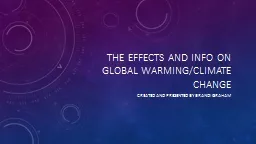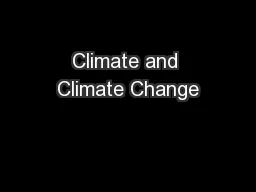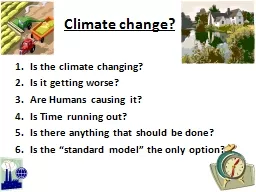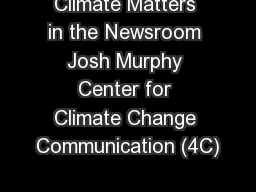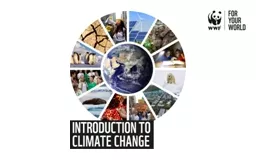PPT-Getting Climate Change on the Front Page
Author : hailey | Published Date : 2024-02-09
Mary Owen Journalist Overview Readers are interested in climate change How do we reach readers Human impact Simple language Strong nut graph Good Sources Pitching
Presentation Embed Code
Download Presentation
Download Presentation The PPT/PDF document "Getting Climate Change on the Front Pag..." is the property of its rightful owner. Permission is granted to download and print the materials on this website for personal, non-commercial use only, and to display it on your personal computer provided you do not modify the materials and that you retain all copyright notices contained in the materials. By downloading content from our website, you accept the terms of this agreement.
Getting Climate Change on the Front Page: Transcript
Download Rules Of Document
"Getting Climate Change on the Front Page"The content belongs to its owner. You may download and print it for personal use, without modification, and keep all copyright notices. By downloading, you agree to these terms.
Related Documents

